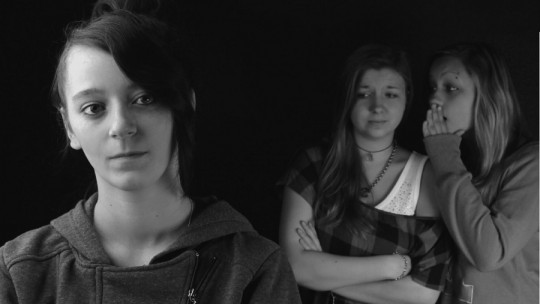
Many times, when we are in a group, we tend to have the same opinion as the majority of its members, just for the sake of not “mismatching.” However, sometimes this happens to the other members of the group, who privately have the same opinion as us but in public adhere to what the majority thinks.
This is what pluralistic ignorance is all about a phenomenon of social psychology that can appear in the face of opinions, beliefs, following norms… It also has a lot to do with the behaviors of offering help in emergency situations (the so-called “bystander effect”), which we will also see in detail later. throughout the article.
Pluralistic ignorance: what is it?
Pluralistic ignorance is a concept of social psychology. This term emerged in 1931, by Daniel Katz and Flyod H. Allport
These authors defined the phenomenon of pluralistic ignorance as that tendency of people not to express their position or point of view in relation to an issue because said position goes against what the majority thinks within a collective; Thus, when faced with an almost majority belief in a group, the person who has a different opinion feels like a minority, and therefore does not express his or her true opinion.
Furthermore, this person believes (wrongly) that others have a different opinion than him, when what often happens is that many of the members of the group do not “dare” to express their true opinion either, because it is different from that of the majority. .
Thus, according to pluralistic ignorance, many times people hide what we really think about a topic, because we believe that others have a different opinion. That is, following the idea of this phenomenon, There is a tendency in human beings to be in tune with others (whether in beliefs, thoughts, behaviors…); The fear of not being so generates this pluralistic ignorance (as far as expressing opinions is concerned).
Clarifications
In this way, when the phenomenon of pluralistic ignorance occurs, people attribute (often incorrectly) a majority attitude in the group, when in reality, its members, privately, express a different opinion on the matter.
That is to say, what we express or think before the group is not the same as what we express privately, with specific members of the group. However, We tend to believe that what people in a group think is what they really think especially if your opinion is the one shared by the majority of its members.
Why this name: “pluralistic ignorance”? Precisely for this reason that we mentioned: in a group, all members may share a vision of reality (plurally); This vision is false, but the fact of sharing it makes it possible for real attitudes and behaviors that are shared privately among its members to continue to exist.
Bystander effect: relationship with pluralistic ignorance
On the other hand, pluralistic ignorance also has to do with another phenomenon in social psychology: the bystander effect.
The bystander effect is a phenomenon that appears before behaviors of needing or asking for help: it is that “the more spectators, in a situation that requires offering our help, the less likely it is to offer help, and the longer it takes until the person who needs it receives it.”
That is, the bystander effect inhibits people’s altruistic response. This is due to three phenomena, among which is pluralistic ignorance, which are:
To illustrate this, let’s take an example. Let’s imagine that we are on the subway, and that we see how a man hits his partner. There are many of us in the subway. What can happen? That we do not offer help to that person, because we unconsciously think “that someone else will help them.”
This is the bystander effect; If, in addition, there are many people on the subway, this omission of help on our part is easier to occur, and it will take longer until the person receives help (if he finally receives it).
Processes prior to helping behavior
To understand it better, we are going to see step by step what happens in the spectator effect, and what the three phenomena that we have mentioned mean to explain it.
Continuing with the example (although many others can serve): there is a man who hits his partner on the subway, in front of other travelers. The processes prior to the behavior of helping and that lead us to the final decision of whether or not to help the victim are the following:
1. Pay attention
The first thing we do is pay attention to the situation, since “there is something wrong.” Here the pressure of time is already beginning to exert: if we do not act, the situation can worsen.
2. Pluralistic ignorance
The second thing that happens is that we ask ourselves: is it an emergency? Here the clarity or ambiguity of the situation exercises its power; If the situation is ambiguous, we may have doubts about whether the situation is an emergency or not
Pluralistic ignorance then appears: we think “perhaps if no person in the subway offers their help, then the situation is not an emergency” (erroneous thinking).
Another thought we can have, which explains pluralistic ignorance, is: “I interpret the situation as an emergency, but the rest ignore it; Therefore, I add myself to ignorance.” Therefore, we continue without helping.
3. Diffusion of responsibility
This is when the third step or process prior to the behavior of helping appears: we ask ourselves: “Do I have any responsibility?”
Diffusion of responsibility then appears, another phenomenon of social psychology, which explains the tendency to minimize responsibility in a situation, when the group of people observing it is large, and when we have not been offered explicit responsibility for it.
This translates, unconsciously, into we evade our responsibility in the situation and we attribute it to others: “let others act.”
4. Evaluation apprehension
In the fourth step of the bystander effect, evaluation apprehension appears. We ask ourselves: “can I help?”
This response is influenced by the knowledge we have on the subject (for example our physical strength, our ability to negotiate or assertiveness…) and the anxiety about others’ evaluation of our behavior.
That is to say, and although it may sound paradoxical, in a way we are afraid of “being judged for helping” or “being judged for how we are helping.” As a result of this process, the following appears.
5. Cost-reward balance
In the last process, which leads us to the final answer of whether or not we help the victim (we ask ourselves: “Do I help?”), We take stock of the costs and benefits of helping the victim
This step is influenced by a series of elements that increase the probability that we will help: empathy for the victim, closeness to them, the seriousness of the situation, its duration… As a result of all these processes, we finally decide whether to help or not. .








